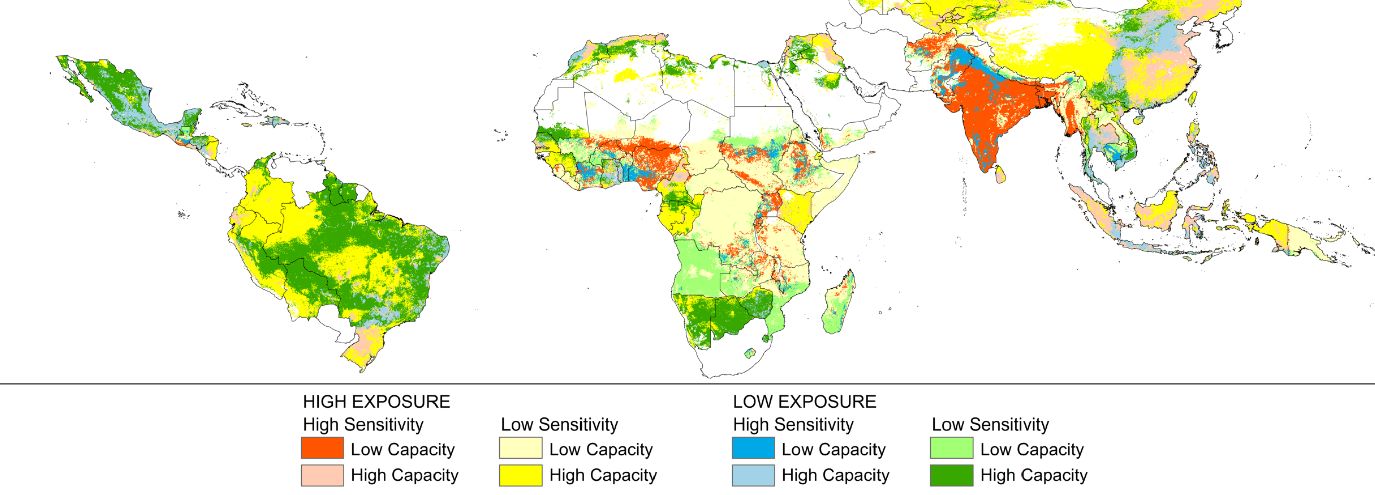After the harrowing U.S. tornado season of spring 2011, more U.S. citizens might be asking themselves if the strange weather we’ve seen in recent years could indeed be due to global warming. Even Newsweek, in its May 31, 2011 issue, suggested this link, saying that in a world of climate change, freak storms are the new normal. But, while we in the U.S. are pondering severe weather, people in other parts of the globe have a less immediately dramatic – but more insidious, more certain, and far more deadly – climate change impact to contemplate. That is the impact of increased hunger for those who are already hungry.
We have heard for years that people in the developing world will suffer most from climate change. And on June 3, 2011, scientists released a report showing places likely to be affected most severely. Their work matched regions of predicted climate change hotspots with regions already suffering chronic food problems. As a result of this work, these scientists suggest that “disaster looms” for parts of Africa and Latin America – and all of India – if existing chronic food insecurity converges with warmer temperatures and extreme weather variability predicted for the remainder of this century.
The Consultative Group on International Agricultural Research (CGIAR) conducted the research program. Read more about CGIAR here.
Read more about CGIAR’s funders here.
The report is called Mapping Hotspots of Climate Change and Food Insecurity in the Global Tropics. A CGIAR research program on Climate Change, Agriculture and Food Security (CCAFS) produced it. These scientists’ goal was to identify highly-vulnerable populations, chiefly in Africa and South Asia – but potentially also in China and Latin America – where the prospect of shorter, hotter, or drier growing seasons by 2050 could imperil hundreds of millions of already-impoverished people.
The team of scientists who undertook the work said they were “responding to an urgent need to focus climate change adaptation efforts on people and places where the potential for harsher growing conditions poses the gravest threat to food production and food security.”

Click here to expand image above
Download the full report (pdf)
The researchers pinpointed areas of intense vulnerability by examining a variety of climate models and indicators of food problems to create a series of detailed maps. One map shows regions around the world at risk of crossing certain climate thresholds – such as temperatures too hot for maize or beans – that over the next 40 years could diminish food production. Another shows regions that may be sensitive to such climate shifts because in general they have large areas of land devoted to crop and livestock production. And finally, the scientists produced maps of regions with a long history of food insecurity.
Polly Ericksen, a senior scientist at the CGIAR’s International Livestock Research Institute (ILRI) in Nairobi, Kenya and the study’s lead author, said:
When you put these maps together they reveal places around the world where the arrival of stressful growing conditions could be especially disastrous. These are areas highly exposed to climate shifts, where survival is strongly linked to the fate of regional crop and livestock yields, and where chronic food problems indicate that farmers are already struggling – they lack the capacity to adapt to new weather patterns.
This is a very troubling combination.
Read more about the June 2011 CGIAR study: Study Reveals Future “Hotspots” of Risk for Hundreds of Millions Whose Food Problems are on a Collision Course with Climate Change
Back here in the U.S., climate scientists have not pinned down a possible connection between more deadly tornadoes and climate change, as Jeff Masters explains in this interview with EarthSky’s Jorge Salazar. The 2011 weather tragedies in the U.S. might be unrelated to climate change. The issue of hunger and climate change, on the other hand, is very different. No one doubts that the world’s hungry will suffer more as the world warms in the 21st century. The June 3, 2011 CGIAR report outlines what it calls “hotspots of risk,” showing just where the hungriest people may live.
How many people in the world today are hungry?
NOAA: Past Decade Warmest on Record According to Scientists in 48 Countries











